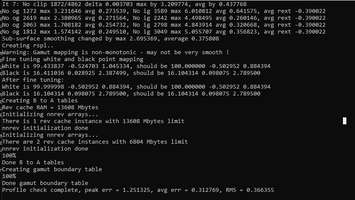- Joined
- Jan 18, 2010
- Messages
- 15,913
- Reaction score
- 8,921
- Points
- 453
- Location
- Residing in Wicklow Ireland
- Printer Model
- Canon/3D, CR-10, CR-10S, KP-3
To me both of these prints look perfect and would be more than acceptable to all concerning artists, which ever amount of patches used it’s all down to proper scanning, great job..Here below a print with a test image: upper image with the 875-patch target profile and lower image with the low 480-patch target profile:

Noted you correctly mentioned 8 bit and not 16 bit, as most others think is possible with their printers..to calculate these correction factors for all of the in between 2 exp 24 = 16 million - possible RGB (8 bit) colors.
On occasions in the past, I have over printed the same image twice to get the desired effect, and now I’ve learned that the newer modern printers don’t allow this over printing method anymore.. Can’t print on a previously printed page..

